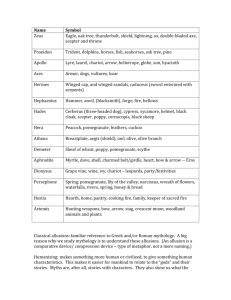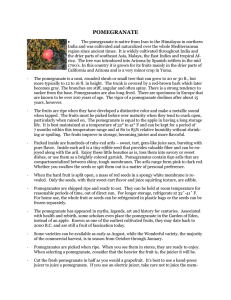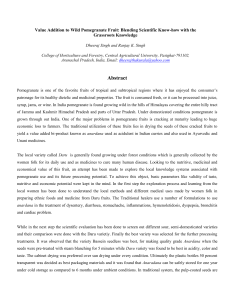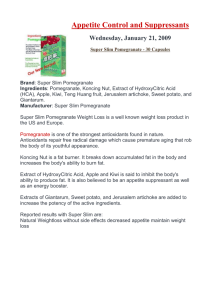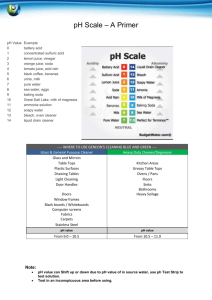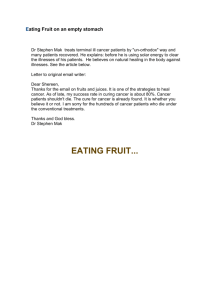First results on pomegranate processing for juice extraction
advertisement
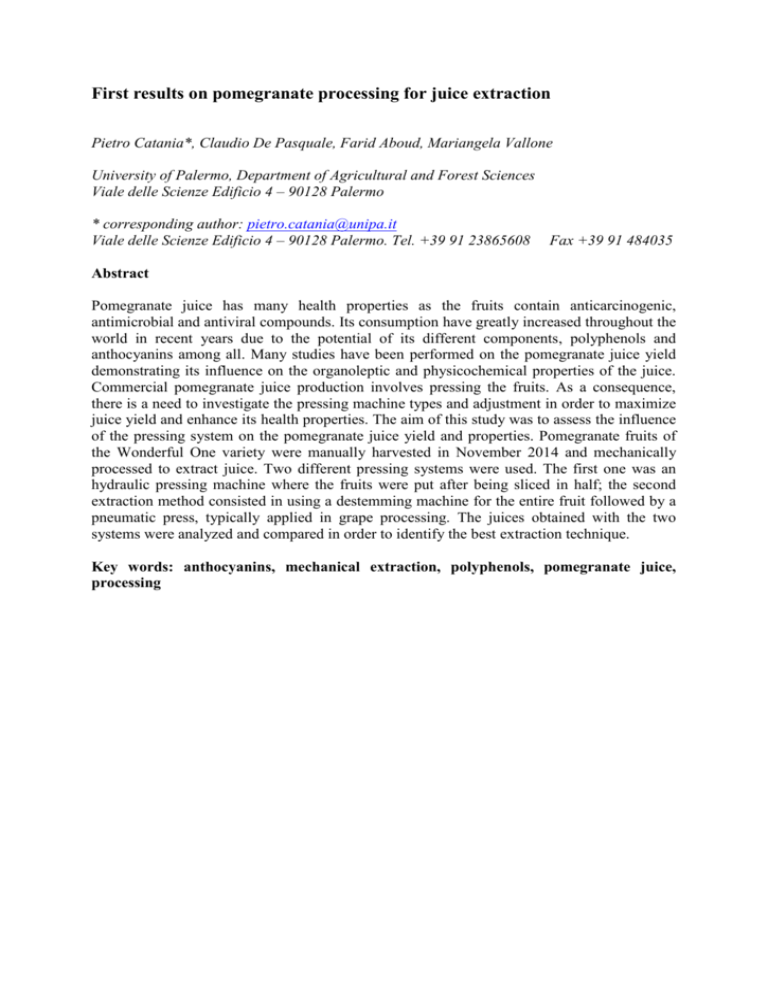
First results on pomegranate processing for juice extraction Pietro Catania*, Claudio De Pasquale, Farid Aboud, Mariangela Vallone University of Palermo, Department of Agricultural and Forest Sciences Viale delle Scienze Edificio 4 – 90128 Palermo * corresponding author: pietro.catania@unipa.it Viale delle Scienze Edificio 4 – 90128 Palermo. Tel. +39 91 23865608 Fax +39 91 484035 Abstract Pomegranate juice has many health properties as the fruits contain anticarcinogenic, antimicrobial and antiviral compounds. Its consumption have greatly increased throughout the world in recent years due to the potential of its different components, polyphenols and anthocyanins among all. Many studies have been performed on the pomegranate juice yield demonstrating its influence on the organoleptic and physicochemical properties of the juice. Commercial pomegranate juice production involves pressing the fruits. As a consequence, there is a need to investigate the pressing machine types and adjustment in order to maximize juice yield and enhance its health properties. The aim of this study was to assess the influence of the pressing system on the pomegranate juice yield and properties. Pomegranate fruits of the Wonderful One variety were manually harvested in November 2014 and mechanically processed to extract juice. Two different pressing systems were used. The first one was an hydraulic pressing machine where the fruits were put after being sliced in half; the second extraction method consisted in using a destemming machine for the entire fruit followed by a pneumatic press, typically applied in grape processing. The juices obtained with the two systems were analyzed and compared in order to identify the best extraction technique. Key words: anthocyanins, mechanical extraction, polyphenols, pomegranate juice, processing

